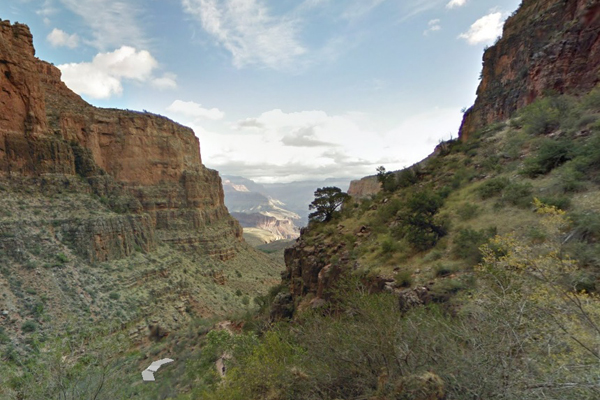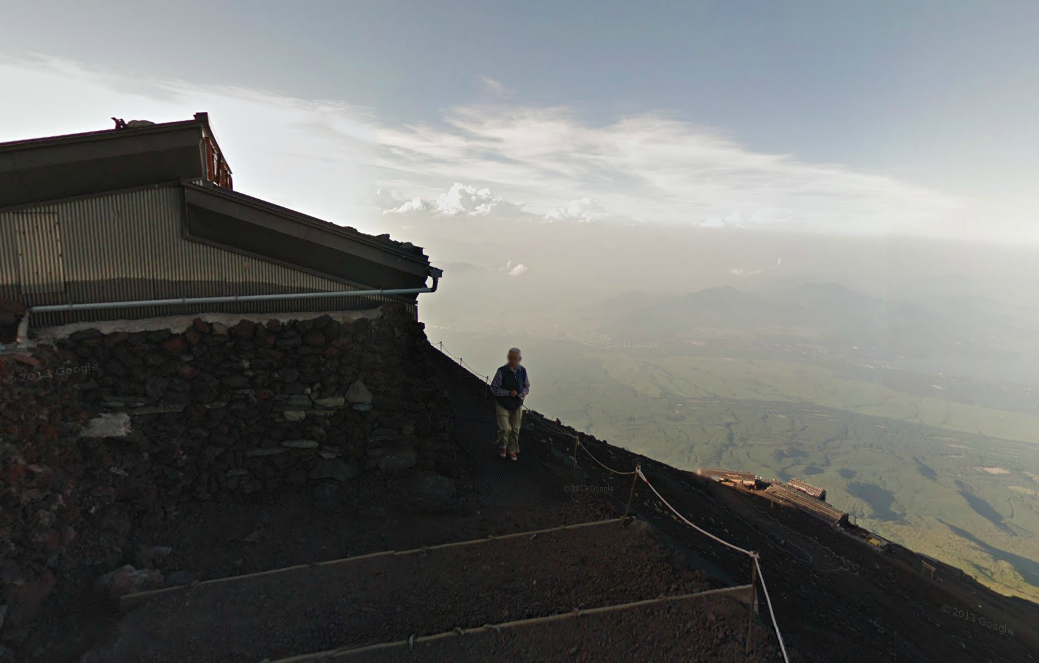
7 Amazing Places to Visit with Google Street View
Cool Google street views

Armchair exploration has never been easier. For those that don't have the money or physical stamina to make it to the world's highest mountains or to see its biggest underwater treasures, Google Street View is one of the tools available to bring panoramic views into anyone's living room – for free.
Google just recently captured thousands of panoramas from Mount Fuji, Japan's highest mountain. And its already explored plenty of other locations, including Antarctica, Mount Everest's base camp and the Great Barrier Reef in Australia, to let those stuck at their computers enjoy the view too.
Amazon rainforest, Brazil

Google Street View: Amazon Rainforest
The Amazon is the largest river basin in the world, with its famous rainforests containing so many millions of species that biologists constantly discover new ones. But its trees and creatures are threatened by human activity, particularly deforestation.
Instead of a street view, virtual wanderers of the Amazon rainforest in Brazil will find themselves on forest trails. In partnership with the Sustainable Amazon Foundation, Google took pictures of the region to highlight its environment as well as the indigenous people who live there.
Google's team used bikes and boats to snag the pictures, and even asked some of the local residents to ride tricycles that had cameras on board.
Mt. Everest, Nepal/Tibet

Google Street View: Mt. Everest Base Camp
Mt. Everest is the tallest mountain in the world, standing 29,035 feet (8,850 meters) above the Nepal/Tibet border of Asia. The first team confirmed to reach the top, Sir Edmund Hillary and Sherpa Tenzing Norgay, made it in 1953. Six decades later, climbing to the summit is not only still risky, but also crowded as thousands of people swarm the trails.
Google's images of Everest's base camp came courtesy of a lightweight camera and tripod equipped with a fish-eye lens. Google's hike to the camp at 18,192 feet (5,545 meters) had risks of its own, including earthquakes, mudslides and flash floods, wrote Sara Pelosi, a manager at the company, in 2011.
The team took 12 days to make it to the base camp, fighting altitude sickness as they hiked more than 70 miles (113 kilometers).
Great Barrier Reef, Australia

Google Street View: Great Barrier Reef
The Great Barrier Reef is a group of coral reefs off the coast of Australia that is the largest living structure on Earth. With an area of 135,000 square miles (350,000 square km) and well over 2,000 reefs to explore, the Google team had a large choice facing them when deciding what to image.
In 2012, Google unveiled 360-degree views from underwater, showcasing some of the many reefs. It took the pictures in association with the Catlin Seaview Survey, which used a specially designed underwater camera to snap the pictures.
The reef photos were just one of several sets of underwater reefs that Google released simultaneously, with other locations including spots in the Philippines and Hawaii.
Antarctica

Google Street View: Antarctica
Antarctica – the world's largest desert, located at the bottom of the world – is still a tough and expensive place for scientists to get to. Its very remoteness, however, makes it a good location for environmental studies or to look at the stars in skies unsullied by light pollution.
Google went inside several historically significant buildings in the area, including polar explorer Ernest Shackleton's hut and some other structures used for early polar expeditions in the 1900s.
Also visible are the South Pole telescope, the Ceremonial South Pole (complete with international flags) and Cape Royds Adélie Penguin Rookery.
Pictures came courtesy of a lightweight tripod camera, using a fish-eye lens. Participants included the Polar Geospatial Center at the University of Minnesota and the New Zealand Antarctic Heritage Trust.
Grand Canyon, United States

Google Street View: Grand Canyon
The Grand Canyon – which is more than a mile deep at its deepest points – is a popular tourist attraction in Arizona. The challenging terrain, however, might encourage a few of the more couch-bound tourists to stay away from the trails. This provided an opportunity for Google to step in.
"Take a walk down the narrow trails and exposed paths of the Grand Canyon: hike down the famous Bright Angel Trail, gaze out at the mighty Colorado River, and explore scenic overlooks in full 360-degrees," Google wrote on its blog in 2013.
To take the pictures, the Google team put on 40-lb (18 kilograms) backpacks carrying a 15-lens camera system that could grab snapshots during the hike. Google placed more than 9,500 panoramas of the area on Google Maps.
Shark Bay, Australia

Google Street View: Shark Bay
Western Australia's Shark Bay, as the name implies, is filled with sharks. It was designated a UNESCO World Heritage Site in 1991 for three reasons, the United Nations group said: huge areas of sea grass, the sea cows that roam the region, and stromatolites (very old algae that create dome-shaped deposits.)
Shark Bay has five of the 26 endangered Australian mammals, according to the Australian government. The zone also has 35 percent of Australian bird species.
Besides the area's ecological importance, Shark Bay is also historically significant. It's the spot where Europeans were first recorded entering Western Australia in the 1600s. The bay itself was named by a pirate, William Dampier, in 1699.
Get the world’s most fascinating discoveries delivered straight to your inbox.
Mount Fuji, Japan

Google Street View: Mount Fuji
Mount Fuji is Japan's highest summit, peaking 12,388 feet (3,776 m) above sea level. Its last major eruption was in 1707, but the mountain still receives significant cultural attention in the country. Thousands climb its slopes every year.
"The currently dormant volcano has inspired countless haiku and woodblock prints over many centuries, and around the world, its perfect conical shape has become one of Japan’s most iconic symbols," Google stated on its blog.
The company used backpacks equipped with cameras to capture the mountain, collecting 14,000 panoramas. The mountain was designated a UNESCO World Heritage Site in June 2013.

Elizabeth Howell was staff reporter at Space.com between 2022 and 2024 and a regular contributor to Live Science and Space.com between 2012 and 2022. Elizabeth's reporting includes multiple exclusives with the White House, speaking several times with the International Space Station, witnessing five human spaceflight launches on two continents, flying parabolic, working inside a spacesuit, and participating in a simulated Mars mission. Her latest book, "Why Am I Taller?" (ECW Press, 2022) is co-written with astronaut Dave Williams.
